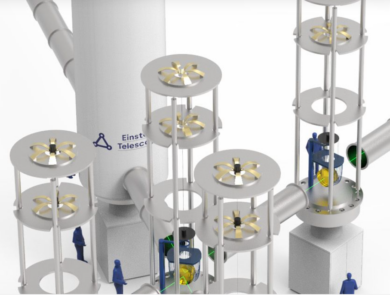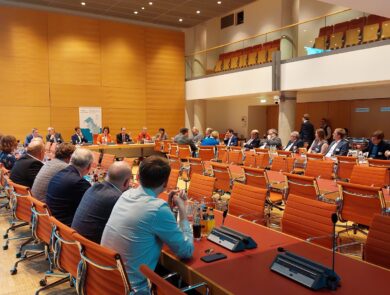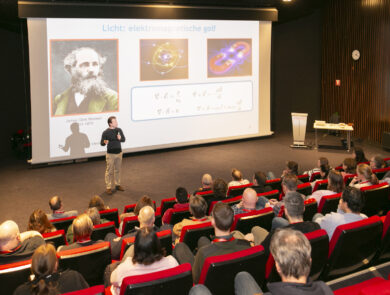European Einstein Telescope group discusses progress

Although the ESFRI proposal was submitted in September, the more than 700 scientists involved have plenty of work to do. Last week, they discussed their progress during a four-day online symposium.
The symposium takes place about once a year and the venue rotates. Last year it took place in Sardinia and about 65 researchers took part. Then they discussed – among other things – a proposal to be included in the European roadmap for research infrastructures (ESFRI).
This year, the symposium was online, with more than 700 scientists taking part. One of the aims was to share the details of the ESFRI proposal with the whole group. Furthermore, all kinds of issues related to the realisation of the Einstein Telescope were discussed. This included technical details that are becoming more and more specific, scientific developments, and also the organisational side. The ongoing geological surveys of both possible sites were also discussed.
Jessica Steinlechner is assistant professor in gravitational waves at Maastricht University. She was one of the presenters and has been attending the yearly symposium since 2012. She noticed the symposium has evolved in several ways: “There were more participants this time, and also more sessions. This year the symposium lasted 4 days, previously only 2 or 3. It was noticeable that there is more organisational structure forming than we had before. We had more attendees from outside the gravitational waves field, and also more attendees from outside Europe than we had at previous meetings. It was great to see so much interest in the Einstein Telescope and to see the community grow.”
One of the participants from outside the gravitational waves field, was geoscientist Florian Amann of RWTH Aachen. He says “The new generation of the Einstein Telescope requires a multidisciplinary effort beyond the typical fields in physics. Due to the boundary conditions, specifications and site selection criteria the projects offers a great deal of research opportunities for geoscientists. However, my interest goes far beyond my own research field. The measurement of gravitational waves itself is fascinating, and I would like to provide a contribution to make this vision real.”


